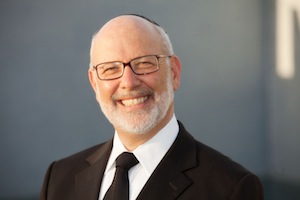The Spiritual marathon
Athletes hit their peak somewhere under the age of 30. Then it’s downhill all the way! People who compete (against no one but their own potential) in the sport of spiritual athletics on the other hand, reach their peak much, much later on.
In last week’s “Toldot with Meforshim Shiur for Women (and Men)”http://iawaken.org/shiurim/view.asp?id=6506 I explained the Kelei Yakar who sees this as the essence of the name “Yaacov”. Eisav is born near perfect (from the perspective of his physical appearance), but Yaacov (named that by G-d Himself not by his parents[1]) will attain perfection only in the later years (Akeiv) of his life. This is the nature of a spiritual journey: it starts small and modestly, it grows, it buds, it blossoms, and then it bursts into full bloom. Like good wine, a person’s greatest spiritual value is after many years of slow maturation.
However, the physical strength of youth and good health is no less important. True success requires the blend of both the mature and the youthful; the wise and the energetic; the rooted and the free-spirited. Businesses that successfully partner the young with the mature have a unique advantage. Individuals too can achieve this edge by synthesizing their own maturity with a playful, adventurous youthfulness that it is so important to preserve throughout life. Appropriately blending the physical with the spiritual is the cornerstone of a life of Torah.
Energy too has these same two components: the physical and the “spiritual”. On the one hand there is fuel, a material resource of finite quantity that, like youth and physical strength, diminishes with time. And on the other hand, there is the energy itself. Energy does not diminish; on the contrary, like mountain fires, it grows in vigor and strength so long as it has fuel to feed it.
Mitzvot are like that too. Mitzvot are finite and measured. Most of them can only be performed in specific times and places. Once we have used up our time on earth we have also used up our store of potential mitzvoth. However, the energy we generate from themitzvot we do is infinite. It is stored in Shamayim (Heaven), where, like a solid investment, it continues to grow in quality, strength and intensity. The energy from Mitzvot is the Torah of those Mitzvot. That is why “Ki Neir Mitzvah veTorah Or” (“for a Mitzvah is like a candle [fuel], and Torah is light [energy]).
Light, candles, fuel and energy are all core to Chanukah. The war against the Hellenists was won by a force small in physical strength and quantity, but great in spirit. It had little fuel but enormous energy. The small vase of pure oil was too little an amount of fuel for the needs of eight days of light, but it had within it the energy to burn for as long as was needed.
The focus of Chanukah
We could wonder: On Chanukah do we focus on the small amount of oil, or on the large amount of energy that oil generated? Are we celebrating the miracle of the scarcity of the fuel or the abundance of the energy?
That is a machloket (academic dispute) between Beit Shamai andBeit Hillel[2]. Beit Shamai says we should start lighting eight candles on the first night and decrease them by one each successive night thereafter. Beit Hillel says the opposite, start with one and work your way up to eight. According to Beit Shamai we are focused on the scarcity of the fuel and its miraculous longevity. This is reflected in the fact that we start with the complete amount, and reduce to one just as fuel starts off full and depletes until it empties. According toBeit Hillel our focus is on the abundant energy generated by too small an amount of fuel. Beit Shamai focuses on the demise of the Hellenists (they started strong and diminished to nothing); Beit Hillelfocuses on the glory of the small band of spiritually pure Jews who started with next to nothing, and ended victorious both militarily and spiritually.
Why Tazadikkim cannot be rewarded in this world
In the performance of the mitzvah we are restricted to one view, and the halachah follows the view of Beit Hillel. But in the study of Torah we can delight in synthesizing the paradox of two opposing views into one symphonic harmony. Their views are two sides of the same coin. Without fuel there is no energy. Without our physical bodies we would have no spirit and no feeling. However, they have opposite dynamics: our bodies decline after their relatively early peak. Our energy however, grows and grows and grows and only peaks near the end. That is why, the Kelei Yakar explains, tzadikkim are not rewarded in this life. They are rewarded for their value at full bloom rather than as a budding sapling. They are rewarded as a full Menorah of light, not as one or two candles barely a source of light.
The amount of energy that a fuel resource can generate is not only a function of quantity. Purity impacts energy generation too. The purer the fuel the less of it you need. Nuclear fuel may be one of the purest forms of energy we know. Very small amounts of matter generate vast quantities of energy when the fuel is pure. Food too fuels our energy. Fewer ounces of food that is pure from a spiritual, health, human, and ethical perspective will generate more calories and nutritious satisfaction than food that is coarse and impure.
Life too, is fuel. The purer we live the more intense is the energy we create, and the more dazzling is the light that we radiate. This is the Law of Chanukah.
Notes:
[1] Rashi
[2] Shabbat 21b








